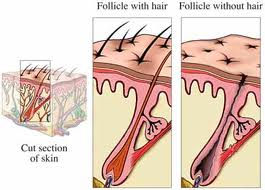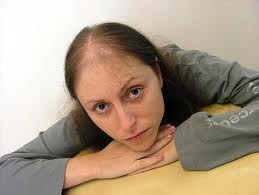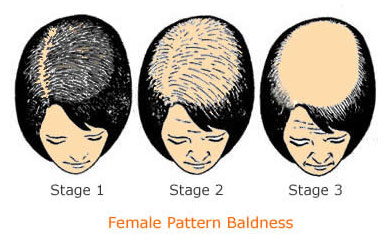Well, the question could be reframed as ‘when does the falling of hair be of concern?’ This is because, medically, some amount of hair falling has been considered ‘normal’. Hair being an appendage of the body like nails, they grow and fall constantly, in varying degree.

How Much of Hair Falling Per Day is Normal?
Medically speaking, for an adult, about 40 to 80 hair falling a day is considered within a normal range. It simply means that one may not consider getting treated for it if this is the case. However, it is also important that if one observes sudden increase of hair falling even within the normal range, it calls for medical attention and evaluation. Again, if one has hair falling within normal range but if they fall from the roots amounting to a definite reduction in the quantum of the total hair on the scalp, it calls for appropriate treatment. In any case, consistent hair falling over 80 a day and/or reduced hair quantum needs to be evaluated for treatment. Localized hair falling, leading to even a tiny hairless spot (alopecia) should always be studied and treated. This condition is discussed separately on this website, please click: alopecia areata.
Normal growth cycle of hair:
Anagen/ The growing phase:
In this phase, the hair grows rapidly from the follicle. This phase usually lasts for about 1000 days; however, it may range form 2 to 6 years. Longer the anagen phase, the longer the hair will grow.
Catagen/ Hair growth stoppage:
This is a regressive phase lasting for about 2 weeks. In this phase, the hair stops growing, the follicle shrinks and part of it may die.
Telogen/ Resting phase:
This is the final resting end phase of hair growth cycle; no further change occurs now. This phase may last for about 2 to 4 months.
Later on, the hair follicle becomes active again developing new hair and forcing old Telogen hair out. At any given time, 90% of hair is in Anagen phase and 10% in Telogen phase. A reversal of the ratio results in thinning of hair.
Note: We, at Life Force, treat cases of Hair loss and Alopecia Areata. We do not treat cases of Baldness or Male-Female Pattern Baldness. It may be noted that many patient get confused and misguided as they may not know the difference between Hair loss / Alopecia Areata and Male Pattern Baldness.
Causes
There may be one or multiple factors leading to hair loss, which may be summarized as under:
- Genetic tendency
- Nutritional deficiency (Iron, Protein, zinc, etc.)
- Local factors (Skin diseases like Psoriasis, Lichen Planus, etc.)
- Hormonal factors (Hyper or hypothyroid, menopause)
- Systemic disease (Liver disease, kidney failure)
- After acute ailments (Viral infection, Typhod)
- Stress factors (Anxiety, depression)
- Drugs (Betablockers for hypertension, chemotherapy, anticholesterol drugs, etc.)
- Unknown factors
Male pattern baldness tends to be genetic in nature and is associated with high levels of circulating testosterone hormone which gets converted to dehydrotestosterone(DHT) which binds the root of the hair follicle, triggering hair loss.
Male/Female Pattern Baldness
Important: Hair loss is treatable using homeopathy. Baldness is not curable.
Male and female pattern baldness is a result of combination of aging, hormones (androgens/testosterone) and heredity (genetics). Men and women tend to lose hair thickness and amount as they age. Inherited or “pattern baldness” affects many more men than women. About 25% of men begin to bald by the time they are 30 years old, and about two-thirds are either bald or have a balding pattern by age 60.
Female Pattern Baldness (FPB):
Some women also develop a particular pattern of hair loss due to genetics, age and male hormones that tend to increase in women after menopause. The pattern is different from that of men. Female pattern baldness involves a thinning throughout the scalp while the frontal hairline generally remains intact.






